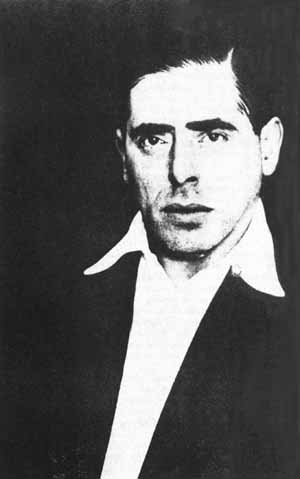Erik
Jan Hanussen
(Herman Steinschneider)
 Hanussen:
The Devil's Prophet Hanussen:
The Devil's Prophet
by Paul Tabori
LATE
IN April, 1933, the
farmworker Mathias Hummel had the unpleasant experience of finding a corpse in
a small wood about fifteen miles from Berlin. The body, riddled with bullets,
had been hastily buried in a shallow grave; but the spring rains had washed
the topsoil away and a well-shod, large foot was sticking out of the mud.
Hummel
ran to tell the police. Seven hours later Kriminalrat Mölders faced a
slim, fair-haired young man in his office at police headquarters in the
Alexanderplatz.
The
young man's name was Dzino Ismet, a Bosnian of German origin.
"I
need your help," Mölders told him. "It might be unpleasant... but I
can't spare you the trouble. We've found a corpse. We have reason to think
that it might be Hanussen."
Dzino,
his face haggard, nodded silently. A few minutes later, in the basement morgue
of the huge red-brick building, a uniformed policeman lifted a coarse sheet
from the body. Dzino gave it a quick glance, then turned away.
"Give
me a cigarette," he asked the Kriminalrat. "That's him."
"Are
you sure?"
"Yes.
I recognize his teeth."
After the post mortem the corpse was released for burial. But it was
not claimed. Erik Jan Hanussen, who less than three months before had packed
the huge Scala, Berlin's leading variety theatre, every night, owned
newspapers, cars, jewels, a fabulous villa and a yacht, ended in a cheap pine-wood
coffin, in a pauper's grave. Not a word of his murder was published in the
German newspapers. Mölders was told to close the case. The bullets extracted
during the autopsy were not examined by ballistic experts. No witnesses were
heard. These were the orders - given by Goebbels, the all - powerful head of
Ministry of Propaganda of the Third Reich, then not quite six months old.
 |